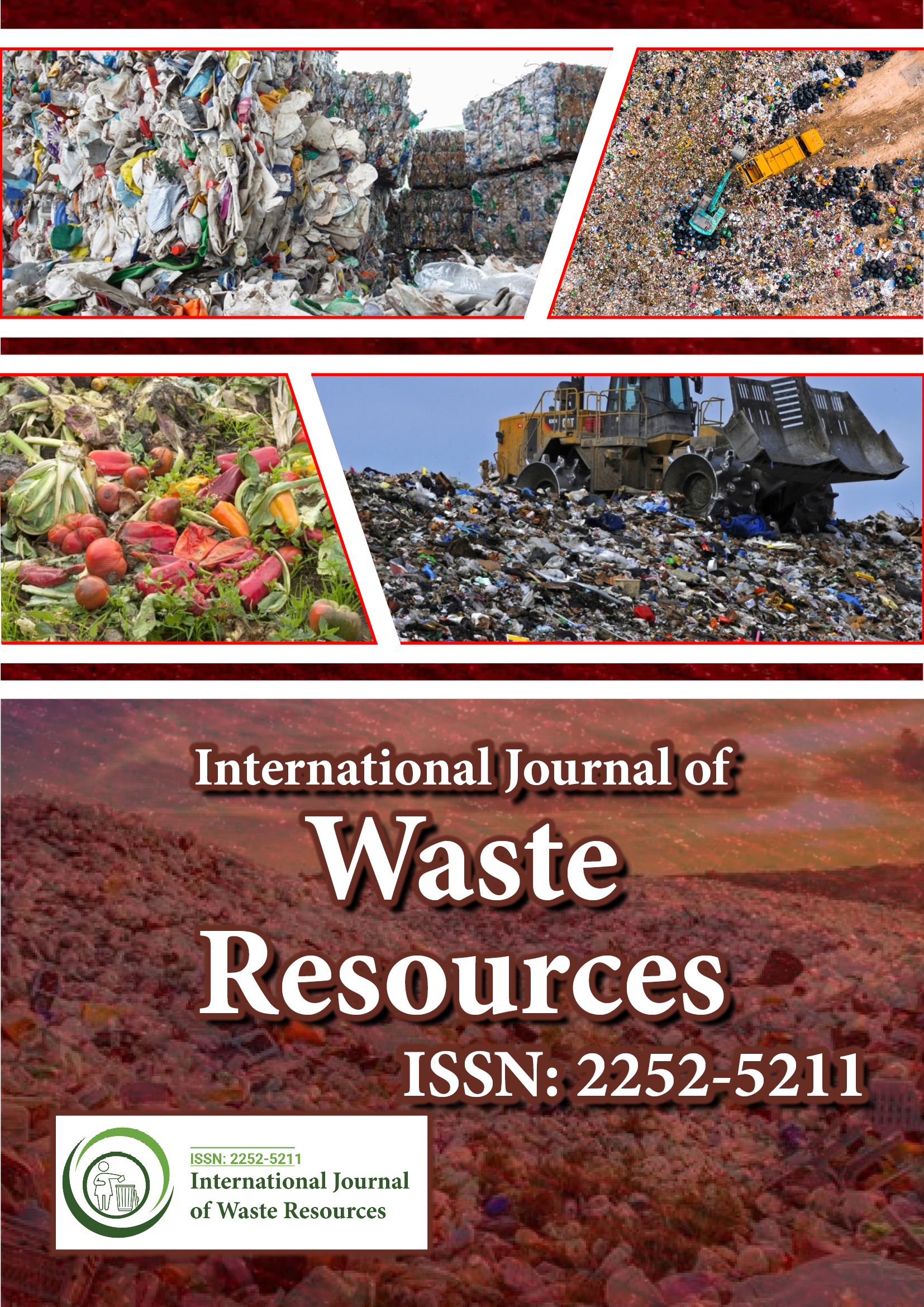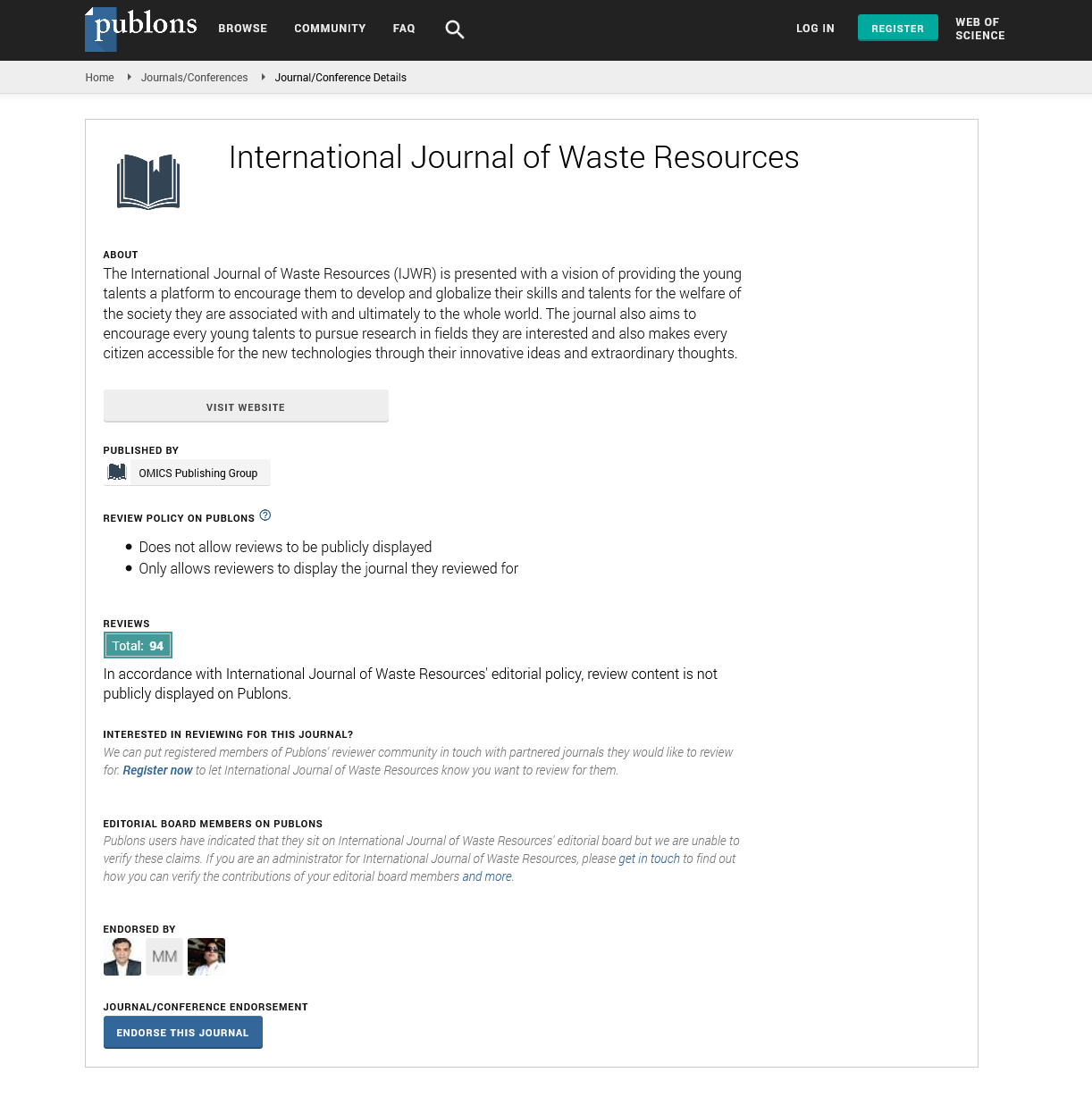Indexed In
- Open J Gate
- The Global Impact Factor (GIF)
- Open Archive Initiative
- VieSearch
- International Society of Universal Research in Sciences
- China National Knowledge Infrastructure (CNKI)
- CiteFactor
- Scimago
- Ulrich's Periodicals Directory
- Electronic Journals Library
- RefSeek
- Directory of Research Journal Indexing (DRJI)
- Hamdard University
- EBSCO A-Z
- Publons
- Google Scholar
Useful Links
Share This Page
Journal Flyer

Open Access Journals
- Agri and Aquaculture
- Biochemistry
- Bioinformatics & Systems Biology
- Business & Management
- Chemistry
- Clinical Sciences
- Engineering
- Food & Nutrition
- General Science
- Genetics & Molecular Biology
- Immunology & Microbiology
- Medical Sciences
- Neuroscience & Psychology
- Nursing & Health Care
- Pharmaceutical Sciences
Perspective - (2022) Volume 12, Issue 3
Conventional and Alternative Methods to Treat Infectious Waste
Received: 02-Mar-2022, Manuscript No. IJWR-22-16347; Editor assigned: 07-Mar-2022, Pre QC No. IJWR-22-16347(PQ); Reviewed: 21-Mar-2022, QC No. IJWR-22-16347; Revised: 28-Mar-2022, Manuscript No. IJWR-22-16347(R); Published: 07-Apr-2022, DOI: 10.35248/2252-5211.22.12.457
Description
Waste generation is an unavoidable part of healthcare delivery around the world. As a result, healthcare waste management is an unavoidable element of providing care. Healthcare facilities in the United States alone produce more than 4 million tons of garbage each year. The cost of disposing of this garbage accounts for 10-20% of the average institution's annual operating budget, and the majority of healthcare facility employees are involved in waste creation and management in some way. In the same way that healthcare waste passes through many hands, from patient to practitioner to procurement and disposal personnel, the danger of infection from contaminated waste passes through each stage from creation to final disposal.
Human Immunodeficiency Virus (HIV), Hepatitis B, and Hepatitis C are among the blood-borne viruses that cause these illnesses. Multi-drug resistant bacterial organisms such as Methicillin Resistant Staphylococcus Aureus (MRSA), Extended Spectrum Beta Lactamase (ESBL) organisms, and Pseudomonas aeruginosa, among others are virulent infectious agents that can contaminate medical waste. To reduce the impact of these diseases on patients, workers, and the community, constant attention and strategic initiatives to deal with infectious medical waste are required.
Consequences of illnesses
Adopting solid procedures to deal with medical waste, particularly infectious waste can have disastrous effects. Ignoring the necessity of waste management not only puts a healthcare facility's existing patients at risk, but it also starts an infection cycle outside its gates.
Current patients, practitioners, trash procurement personnel, and the general public are all at danger of being exposed to improper managed medical waste.
Adverse effects to patients
Patients are usually the victims of waste management procedures that are not up to far. For instance, according to one global waste management research, roughly 30% of injections provided in one country were done with previously used equipment. Given that injectable drugs and immunizations are among the most commonly performed medical procedures, this poses a considerable danger for the spread of deadly illnesses. However, needles are not the only possible vectors. Reusing any sharp equipment might spread illness among patients or between practitioners and patients.
Employees in charge of rubbish collection
Individuals who collect and dispose of medical waste are often at high risk of contracting infectious diseases. According to one study of medical waste handlers in the developed world, nearly 100% of workers have their clothing contaminated with blood splashes within 4 hours of starting a shift, and workers have complete saturation of all clothing layers with blood or body fluids once every 150 hours worked.
Furthermore, clinical waste workers are usually under trained not only in infection control methods but also on the importance of preventing infections in the first place.
Most effective methods to prevent infection
The ways through which employees and waste management personnel will be trained to implement and monitor the facility's waste management plan should be the most significant consideration when designing a strategy for decreasing the infectious potential of healthcare waste materials. The size and complexity of the facility will often dictate the volume of garbage, particularly infectious waste that it generates the financial resources.
Waste management safety
In order to be effective, every healthcare waste management plan must include a component of self-analysis and monitoring, because of differences in resources, size, and complexity, each institution must tailor the mechanisms it will use to monitor the waste management plan's safety and implementation. While there is little data on the best practices for assuring waste management safety concepts used to monitor other aspects of healthcare, such as minimizing healthcare associated infections that can serve as examples for best practices.
Citation: Pilli S (2022) Conventional and Alternative Methods to Treat Infectious Waste. Int J Waste Resour. 12:457.
Copyright: © 2022 Pilli S. This is an open access article distributed under the terms of the Creative Commons Attribution License, which permits unrestricted use, distribution, and reproduction in any medium, provided the original author and source are credited.

